
Do Aluminium PCB Heatbeds Reduce Hotspots?
Aluminum PCB heatbeds are great at getting rid of hotspots because they conduct heat so well. This makes them perfect for situations where you need to control the temperature really closely, like 3D printing and high-power LED lighting. They cost more, but they’re worth it, especially if you’re working with a lot of power or you need a lot of performance.
What Are Aluminium PCB Heatbeds?
Aluminum PCB heatbeds are printed circuit boards that use an aluminum base for better heat dissipation. Unlike traditional PCBs, which usually use materials like FR4 (a composite of fiberglass and epoxy), aluminum PCBs have a metal core that acts as a heat sink. This design allows the board to distribute heat more evenly, which reduces the risk of hotspots.
Typical Use Cases:
Aluminium PCB heatbeds are commonly used in applications where heat management is crucial. This includes LED lighting, power converters, and more notably, in 3D printing. In 3D printers, maintaining a uniform bed temperature is essential for ensuring print quality, making aluminium PCB heatbeds a popular choice.
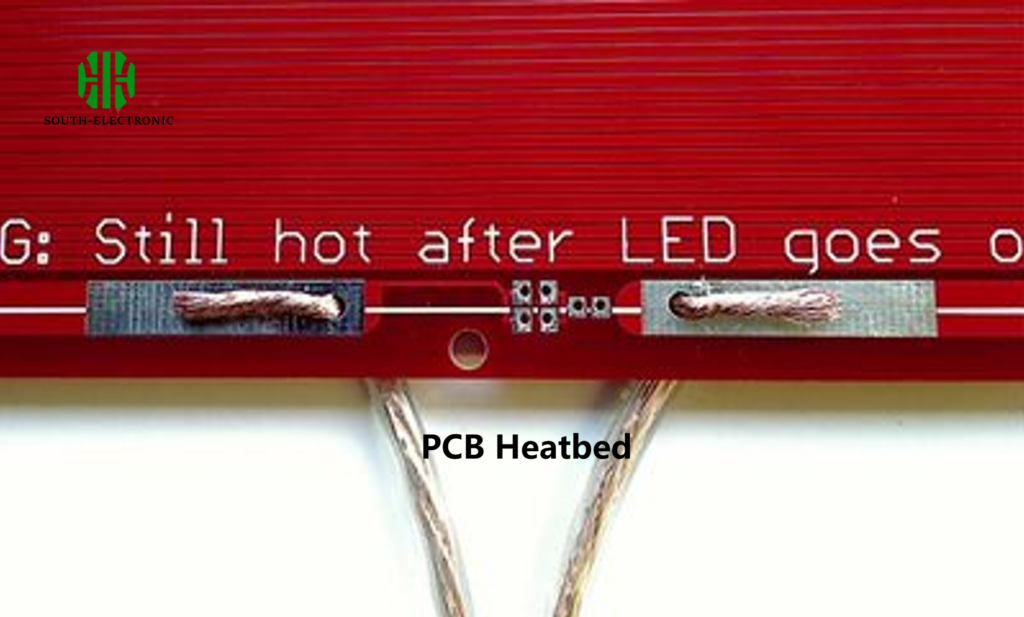
How Does Aluminium Compare to Other PCB Materials?
Thermal Conductivity
The biggest advantage of aluminum over other PCB materials is its thermal conductivity. Aluminum has a thermal conductivity of about 200-250 W/m-K, which is much higher than FR4, which has a thermal conductivity of only 0.25-0.35 W/m-K. This high thermal conductivity allows aluminum to spread heat more efficiently, which reduces the occurrence of hotspots.
Comparison of Thermal Conductivity Between PCB Materials
| Material | Thermal Conductivity (W/m-K) |
|---|---|
| Aluminium | 200-250 |
| FR4 | 0.25-0.35 |
| Kapton | 0.12 |
| Copper | 385 |
Cost and Performance
Aluminum is better at getting rid of heat, but it usually costs more than FR4. However, if you really need to get rid of heat, the advantages of using aluminum are usually worth the extra money. Plus, aluminum is tougher and harder to break, which makes it a good choice for high-performance stuff.
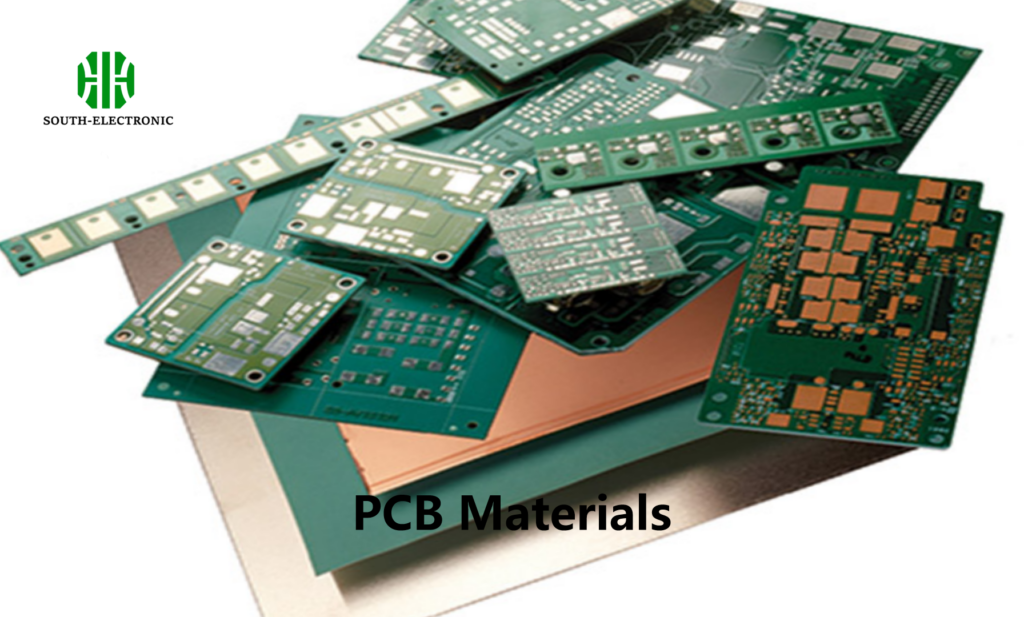
Why Is Thermal Management Important in PCB?
Impact on Device Performance:Aluminium PCB heatbeds are designed to efficiently dissipate heat from electronic devices. They are made from a layer of aluminium that is bonded to a layer of copper. The aluminium layer acts as a heat spreader, while the copper layer provides electrical conductivity. This combination allows heat to be transferred away from the components and spread evenly across the board. The heat is then dissipated into the surrounding environment, keeping the device cool and preventing hotspots from forming.
Role of Heat Dissipation:There are several advantages to using aluminium PCB heatbeds. First, they are lightweight and compact, making them ideal for use in small electronic devices. Second, they are highly efficient at dissipating heat, which helps to keep the device cool and prevent hotspots from forming. Finally, they are cost-effective and easy to manufacture, making them a popular choice for electronic device manufacturers.
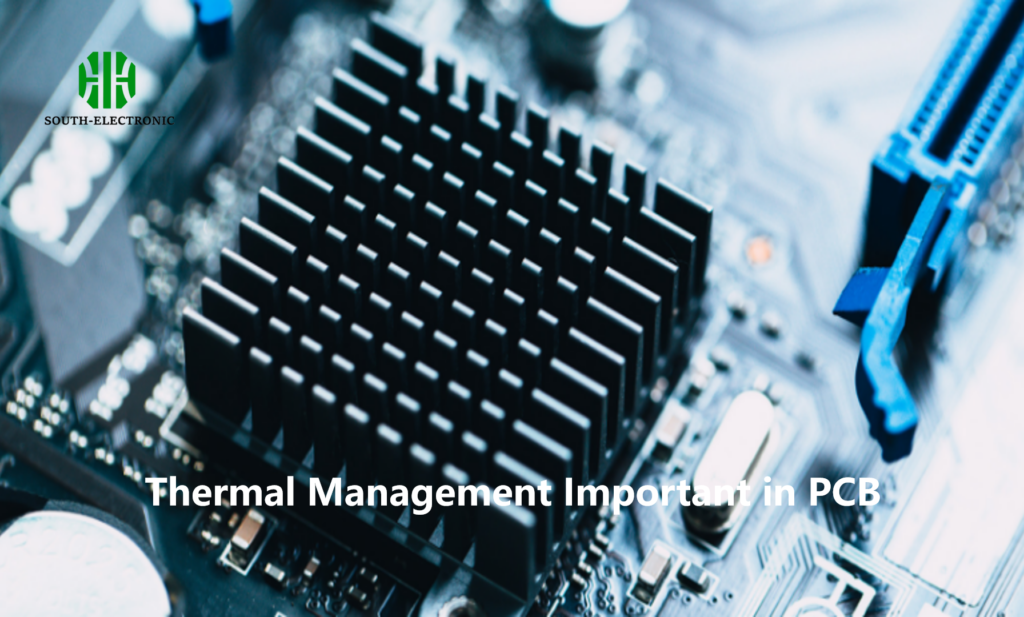
Scientific Evidence:Aluminium PCB Heatbeds Reduce Hotspots
Studies and Data
There have been a few studies that have shown that aluminum PCB heatbeds work better at reducing hotspots. For example, if you look at thermal images of aluminum PCB heatbeds in 3D printers, you can see that the temperature is more even compared to FR4 or Kapton. Aluminum has a high thermal conductivity, so it acts like a heat sink, absorbing and spreading the heat more evenly.
Temperature Distribution on Aluminium vs. FR4 Heatbeds (Based on Thermal Imaging Data)
| Material | Average Temperature (°C) | Maximum Hotspot Temperature (°C) | Uniformity (±°C) |
|---|---|---|---|
| Aluminium | 100 | 102 | ±2 |
| FR4 | 100 | 110 | ±10 |
| Kapton | 100 | 115 | ±15 |
Real-World Applications
In real-world applications, such as 3D printing, users have reported fewer issues with warping and layer separation when using aluminium PCB heatbeds. The reduction in hotspots helps maintain a consistent printing temperature, leading to higher-quality prints and fewer failed projects.
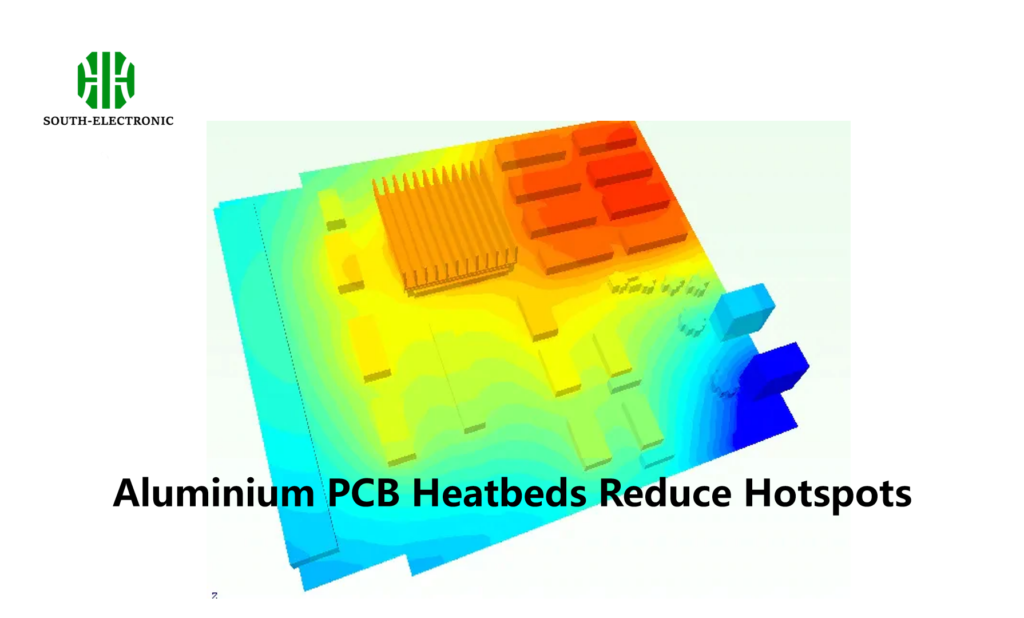
Pros and Cons of Using Aluminium PCB Heatbeds
Advantages
- Superior Heat Dissipation: Aluminium’s high thermal conductivity ensures efficient heat spreading, reducing hotspots.
- Durability: Aluminium PCBs are more resistant to mechanical stress and wear, making them ideal for demanding environments.
- Better Performance in High-Power Applications: Aluminium PCBs are particularly effective in applications where high power and heat are involved.
Disadvantages
- Higher Cost: Aluminium PCBs are generally more expensive than traditional materials like FR4.
- Weight: Aluminium is heavier than some alternative materials, which could be a consideration in weight-sensitive applications.
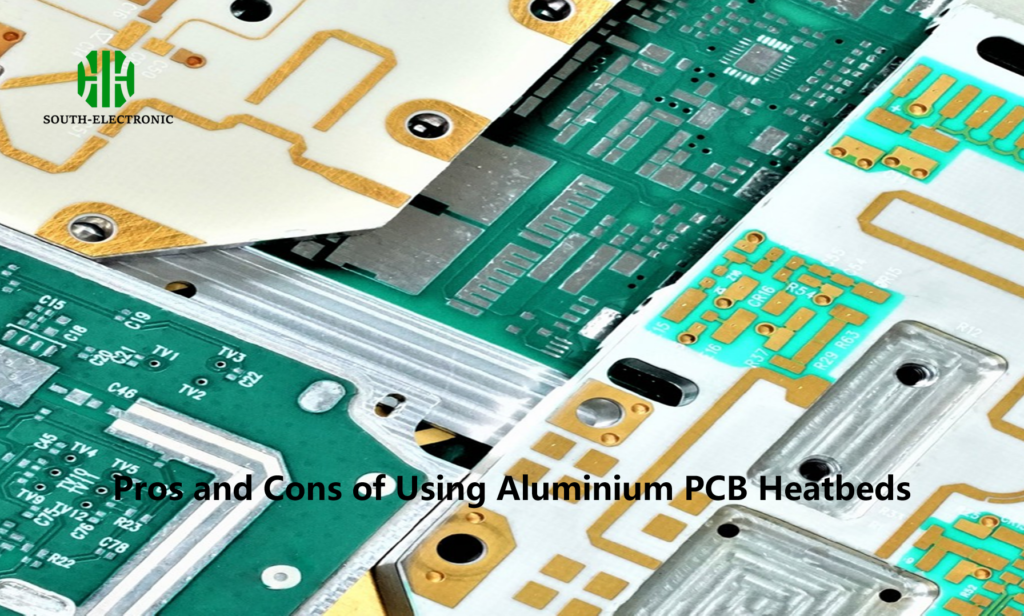
Practical Applications of Aluminium PCB Heatbeds
3D Printing
When it comes to 3D printing, keeping a consistent bed temperature is key to getting good prints. A lot of people use aluminum PCB heatbeds to make sure the whole bed heats up evenly. That way, you don’t get warping or other print problems.
High-Power LED Lighting
Aluminum PCB heatbeds are also widely used in high-power LED lighting, where they help to manage the significant amounts of heat generated by the LEDs. This ensures that the LEDs maintain their brightness and color accuracy over time.
Manufacturing Considerations
If you’re a business that wants to use aluminum PCB heatbeds in your products, you can customize them in a few different ways. You can change the thickness of the aluminum core, the type of dielectric, and the overall size and shape of the PCB.
When you’re choosing a supplier for aluminum PCB heatbeds, you need to think about things like how many they can make, how they check the quality, and how long it takes them to get the stuff to you. You want to work with a supplier you can trust so that the heatbeds you get work right and don’t burn your house down.



